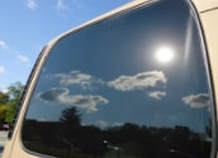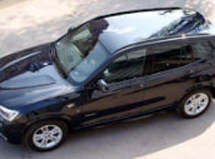|
If you own a car or like cars, you've probably thought about getting window tint as one of the first upgrades you can make to your car. With so many choices for car window tinting today, it can be hard to find the right one for you. Should you get dyed window film, carbon color-stable tint, or ceramic tint for your car? When looking for window tint, we must first look at the pros and cons of each type. Read on to learn more about ceramic tint, carbon color stable tint, and dyed tint, as well as the most important things to think about when choosing one of these options. What is a regular window tint? Regular tint, which is also called dyed window film, is the most basic kind of tint. It's just what it sounds like: a colored film that makes your car windows darker. This is one of the most common window tints. You've probably seen a few of these films at your local convenience store with labels like VLT 5%, 25%, or even 50%. VLT stands for "Visible Light Transmission." These numbers show how much light can pass through different films, and they also show how dark your window will look after the film has been put on. For example, a window with a VLT of 70% will look very bright, while a window with a VLT of 5% will look very dark. The number tells you how see-through your film is. The higher the number, the less see-through your film is. At first, these terms may be hard to understand, but we have a great blog about window tint terminology that will help you learn everything you need to know about these terms. Click here to learn more about how to talk about window tinting. There are a few false ideas about window tint that you should not believe. At first, it may seem like the darker the tint, the more protection it gives. This isn't quite right because dyed window films only help block UVA and UVB rays, not infrared rays. You might wonder why blocking Infrared light is so important for window film. UV protection is important, but you also need infrared protection if you want a car window tint that protects you and keeps the inside of the car cooler. When you leave your car in the sun for a long time, infrared radiation warms up the cabin. This not only hurts the inside of your car, especially if it has leather, but it also blows hot air in your face when you get in. Another problem with buying these basic dyed window tints is that it's not clear how long the film will last. After being in the car for a long time, most dyed films start to fade and turn purple. This makes it hard to see clearly through your windows. If you hire a tint installer, they will probably charge you the same amount for labor whether they are installing lower quality window tint films or higher quality window tint films like carbon color stable or ceramic window tint. Due to the cost of replacements, this can get expensive over time. If you want a window tint that lasts longer and works better, the extra cost of ceramic window tint or carbon color stable window tint is worth it in the long run. Most installers will also give you a warranty that lasts a lifetime when you buy higher-quality options to standard window tint. Even though dyed window film has been around for a while, improvements in technology have led to better, higher-quality options. Carbon Color Stable Tint is the next best step if you want heat-repelling properties that are more useful and effective and won't fade. What is Stable Tint Carbon Color? If you want a tint with better heat-rejection properties, Carbon Color Stable tint is your next best option. People think that Color Stable tint is a better type of film than dyed window film when it comes to blocking heat and providing protection. One of the most important things about Carbon color stable tint is that it doesn't fade or change color when exposed to the sun. KAVACA carbon color stable filters up to 70% of infrared heat and blocks 99.9% of UV rays from reaching you and your passenger. Ceramic window tint may be just what you're looking for if you want a high-end window tint that blocks even more infrared heat and gives you the most heat rejection possible. With its state-of-the-art nano-ceramic technology, it has all the benefits of carbon color stable tint, and more. How does Ceramic Window Tint work? Ceramic tint has been a popular choice for many car owners, and for a good reason. Ceramic window tint is the best film on the market right now for protecting against harmful UV rays and cutting down on heat. It has many advantages over-dyed window film. One of the best things about a ceramic tint like KAVACA Ceramic IR is that it can block up to 99% of the UVA and UVB rays that can cause cancer while filtering out 96% of the infrared heat. Ceramic window film is different from dyed window film in that it has ceramic particles that bend IR rays in different directions, stopping them from getting into the car. This difference is very clear, especially on a hot, sunny day when you're stuck in traffic. Ceramic window tint is better than dyed films because it cuts down glare more. The sun's bright light can make it hard to see while driving, which can lead to accidents. With ceramic window tint, you won't have to worry about the sun affecting your ability to drive. Think of it like sunshades for your car. Does Ceramic Window Tint Make Sense? It is, yes. KAVACA ceramic tint is the way to go if you want high-quality, high-performance window tint. It lasts the longest of any tint and keeps you and your passengers safe from everyday road hazards.
Whether you want to change the way your car looks or make it cooler, KAVACA ceramic tint will give your car the long-lasting durability and protection you need. Click the button below to get a free quote right away.
0 Comments
Leave a Reply. |
AuthorWrite something about yourself. No need to be fancy, just an overview. Archives
November 2023
Categories |
Yonkers winting tint blog. check back often!
Site by Hellfire Digital Marketing
copyright 2017 Yonkers Window Tinting
copyright 2017 Yonkers Window Tinting
 RSS Feed
RSS Feed



